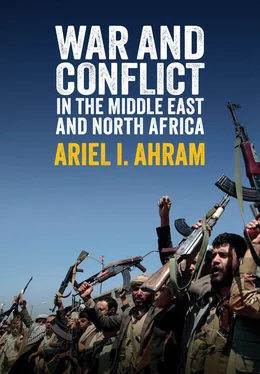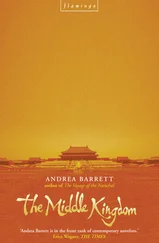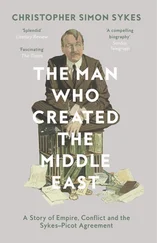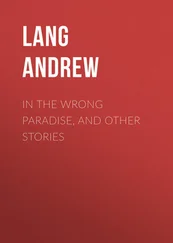9 9. Douglass C. North, John Joseph Wallis, and Barry R. Weingast, Violence and Social Orders: A Conceptual Framework for Interpreting Recorded Human History (New York: Cambridge University Press, 2009).
10 10. Edward W. Said, Orientalism (New York: Vintage, 1979), 83.
11 11. Abbas Amanat, Is There a Middle East? The Evolution of a Geopolitical Concept (Stanford, Calif.: Stanford University Press, 2012).
12 12. Fred Halliday, The Middle East in International Relations: Power, Politics and Ideology (New York: Cambridge University Press, 2005), 81.
13 13. Nikki R. Keddie, “Is There a Middle East?,” International Journal of Middle East Studies 4, no. 3 (1973): 255–71 (258).
14 14. Yaniv Voller, “From Periphery to the Moderates: Israeli Identity and Foreign Policy in the Middle East,” Political Science Quarterly 130, no. 3 (2015): 505–36; Kamal S. Salibi, “The Lebanese Identity,” Journal of Contemporary History 6, no. 1 (1971): 76–86.
15 15. Martin W. Lewis and Kären E. Wigen, eds., The Myth of Continents: A Critique of Metageography (Berkeley: University of California Press, 1997); Ariel I. Ahram, Patrick Köllner, and Rudra Sil, eds., Comparative Area Studies: Methodological Rationales and Cross-Regional Applications (New York: Oxford University Press, 2018).
16 16. For one example, see Paul Salem and Ross Harrison, eds., Escaping the Conflict Trap: Toward Ending Civil Wars in the Middle East (Washington, DC: Middle East Institute, 2019).
17 17. One recent exception is Anders Jägerskog, Michael Schulz, and Ashok Swain, eds., Routledge Handbook on Middle East Security (London: Routledge, 2019).
18 18. Hazem Adam Ghobarah, Paul Huth, and Bruce Russett, “The Post-War Public Health Effects of Civil Conflict,” Social Science & Medicine 59, no. 4 (2004): 869–84; Christopher J. L. Murray et al., “Armed Conflict as a Public Health Problem,” BMJ 324, no. 7333 (2002): 346–9; Michael Palmer et al., “Long-Lasting Consequences of War on Disability,” Journal of Peace Research 56, no. 6 (2019): 860–75.
19 19. Michael N. Barnett, Confronting the Costs of War: Military Power, State, and Society in Egypt and Israel (Princeton, NJ: Princeton University Press, 2012); Thierry Gongora, “War Making and State Power in the Contemporary Middle East,” International Journal of Middle East Studies 29, no. 3 (1997): 323–40.
20 20. Steven Heydemann, “Introduction,” in War, Institutions, and Social Change in the Middle East, edited by Steven Heydemann (Berkeley: University of California Press, 2000), 1.
21 21. Lingyu Lu and Cameron G. Thies, “War, Rivalry, and State Building in the Middle East,” Political Research Quarterly 66, no. 2 (2013): 239–53; Mehran Kamrava, Inside the Arab State (New York: Oxford University Press, 2018); Daniel Neep, “War, State Formation, and Culture,” International Journal of Middle East Studies 45, no. 4 (2013): 795–7; Rolf Schwarz, “Does War Make States? Rentierism and the Formation of States in the Middle East,” European Political Science Review 3, no. 3 (2011): 419–43.
22 22. Bent Flyvbjerg, Making Social Science Matter: Why Social Inquiry Fails and How It Can Succeed Again (New York: Cambridge University Press, 2001); Karl Spracklen, Making the Moral Case for Social Sciences: Stemming the Tide (New York: Springer, 2015).
PART I CONTEXT
1 Accounting for War in the Middle East and North Africa
War and conflict are common leitmotifs in descriptions of the Middle East and North Africa. Media coverage depicts the region as marred by constant crises, atrocities, and bloodlettings, a veritable breeding ground for violence. But how much war is there in MENA? How are these wars fought? How bad are they? These questions relate, respectively, to the frequency, the form, and the magnitude of armed conflict. Answering them requires an approach that compares MENA to other areas of the world and looks within the region for internal variation. This chapter examines the patterns of war and organized violence in MENA quantitatively. There are three main axes of comparison. First is the comparison between MENA and other regions, particularly in the developing world. Second is the comparison between MENA countries. Third is the comparison over time from the beginnings of the modern state system through mid-twentieth-century decolonization to the twenty-first century. MENA on the whole has followed global modes in most important respects. However, some countries within the region have been especially war prone. Moreover, the magnitude and impact of war have increased dramatically in MENA since the turn of the twenty-first century.
Measuring war is not easy. War is as complicated an activity as a social or behavioral scientist can study. It entails enormous feats of organization, coordination, and discipline. In 1971, sociologist Fred Charles Iklé, later a senior US defense official, described the challenges of amalgamating “the most diverse indicators: reports from the battlefield, statistics on potential military resources, and impressionistic predictions of how friend and foe will bear the cost and suffering of further fighting.” 1Accessing, collating, and assessing this data is always hard. Prevailing insecurity on the ground might obstruct the gathering of information. Belligerents wishing to promote specific narratives about who instigated violence or its impact sometimes deny access to information from conflict-affected areas or even fabricate events for the purposes of public relations. The obfuscation extends even to the words used to describe a particular conflict. War comes with attendant organizational, normative, and legal standards about how combatants (and civilians) should behave. Yet belligerents often try to upgrade or downgrade specific instances of conflict in order to control narratives of conflict. To call an adversary a terrorist or criminal, rather than a soldier, is both to elevate your standing and to denigrate the opponent. 2These descriptions can have major implications for the conduct of conflict.
The question “What is war?” is simultaneously ontological, conceptual, and methodological. Many analyses revert axiomatically to German military theorist Carl von Clausewitz’s dictum that war is the continuation of politics by other means. But that only begs the question of what political ends war extends. Historian Jeremy Black parses between functional and cultural/ ideological elements in the definition of war. “Functionally, [war] is organized large-scale violence. Culturally and ideologically, it is the consequence of bellicosity.” 3In each of these domains there can be considerable variation, but the results are the same.
Roughly coinciding with Iklé’s lament, social scientists in the 1970s launched the Correlates of War (CoW) project. Their aim was to remove the study of war from the sole purview of war-fighters and to address the study of war from a scientific perspective. Housed at the University of Michigan, researchers cataloged data on instances of conflict worldwide extending back to 1816. This was not an arbitrary cut-off point. The end of the Napoleonic wars is often cited as the beginning of the modern European state system. This fundamentally Euro-centric periodization was closely tied to the way the CoW researchers conceived of war itself. CoW was a product of the Cold War. Many of its researchers saw their role as finding ways to address US–Soviet tensions. The CoW definition favored large-scale war (with over 1,000 battle deaths) mostly conducted by the standing armies of powerful states. It was not that CoW researchers were unaware of internal (civil) conflicts. It was that they regarded these wars as less consequential to the global calculus of peace and conflict between the United States and the Soviet Union. 4
Читать дальше












